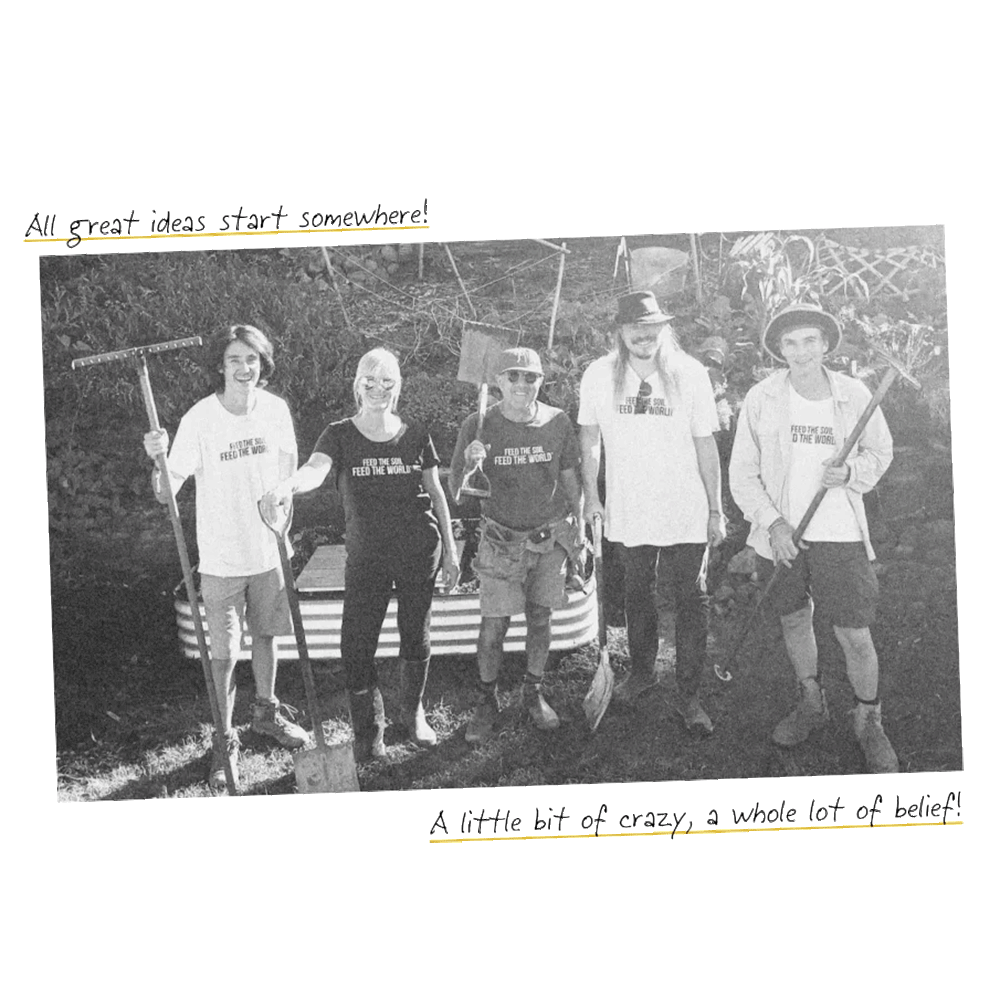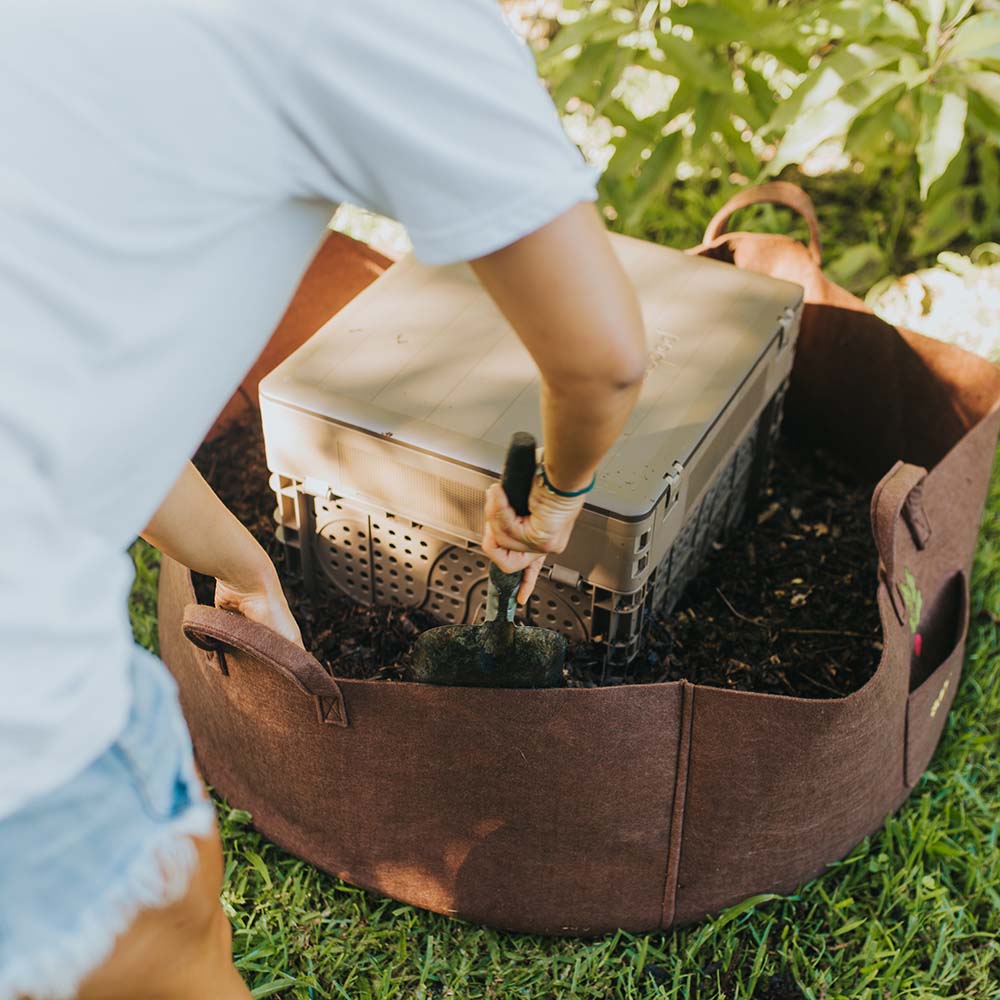Can You Compost Potatoes
In this article:

Rather than treating your food scraps as trash and sending them to the bin, by composting, you let nature convert that organic waste into a nutrient-rich amendment for feeding your plants and increasing soil fertility. Here we supply guidance for composting potatoes, their classification as a "green" or "brown" material and provide specific tips and things to keep in mind to compost potatoes effectively.
Can You Compost Potatoes?
The short answer is yes, you can compost potatoes. Potatoes are rich in nutrients such as potassium and phosphorus, making them valuable additions to your compost and provide nutrients that especially support the growth of healthy soil bacteria. There are a couple of steps to follow to keep them from sprouting or attracting pests while breaking down.
Can You Compost Potato Peels?

Yes, potato peels are compostable. In fact they contain higher concentrations of potassium and iron and calcium than are present in the interior of the potato. For heap or pile composting however, you’ll want to exclude peels that are rotting or diseased as these can fester further before they break down. For Subpod, you can include these peels as well since they will be buried into the composting chamber and rapidly break down.
Is Potato a Green or Brown Composting Material?
To understand how to compost potatoes for pile or heap composting, it’s helpful to determine their classification as "green" or "brown" material because the ratio of green to brown needs to be balanced for best results - more about that process below. "Green" refers to nitrogen-rich materials, while "brown" refers to carbon-rich materials.
Potatoes are considered "green" material given their higher nitrogen content. Potato peels are less green than the interior so these can be considered balanced between green and brown.
How to Compost Potatoes: Heap or Pile Method
1. Chop or shred: To accelerate decomposition, chop or shred potatoes into small pieces. This increases the surface area, allowing microbes to break them down more efficiently. Best to do this as you generate the scraps.
2. Mix with "brown" material: To maintain a proper balance of carbon and nitrogen, mix your potato scraps with "brown" material such as dried leaves, straw, shredded newspaper, cardboard or sawdust. Strive for a ratio of approximately 3 parts "brown" to 1 part "green” with heap or pile composting.
3. Layering: Layer the potato scraps and "brown" material in your compost bin or pile. Start with a layer of "brown" material, add a layer of potato scraps, and repeat until all the materials are used.
4. Moisture and aeration: Keep your compost pile moist, but not waterlogged, by periodically adding water. Add a tarp to the top when there is heavy rain to keep the rain out. Ensure proper aeration by turning the pile regularly (every few weeks or so) or using a compost bin with built-in aeration features.
5. Time and patience: Pile composting takes time, depending on the time of year and your climate, you will have nutrient-rich compost at the bottom of the pile after 4 to 8 months.
Tips for Heap or Pile Method
Consider the following tips for best results:
1. Avoid sprouted or rotten potatoes: While you can compost potatoes, it's best to avoid sprouted or rotten ones. These can sprout in your compost pile or attract unwanted pests.
2. Cover potato scraps: To prevent pests, cover your potato scraps with a layer of "brown" material or soil. This helps deter critters while allowing the composting process to continue.
3. Mix with other kitchen scraps: Combine potato scraps with a variety of other kitchen scraps to create a diverse mix of organic matter. This promotes a balanced and nutrient-rich compost.
4. Monitor moisture levels: Maintain a moist but not soggy compost pile. If your compost becomes too dry, add water; if it becomes too wet, add more "brown" material to balance it out.
How to Compost Potatoes using Subpod

Composting potatoes in a Subpod is easier and quicker than using the Heap Method described above. All parts of the potato are welcome; skins, sprouted bits and raw or cooked leftover parts. Unlike in the tip section described above, it’s fine to include rotten or sprouted bits that you wouldn't cook with.
It’s convenient to have a kitchen collection caddy to store food scraps as you cook and cut the pieces small before you add them. Ideally you’ll have a large variety of food scraps in the caddy by the time it is full. If you are adding cooked potato leftovers, since worms don’t like a lot of salt, it’s best to either add small amounts of this or rinse off excess salt before adding to the kitchen caddy.
When the caddy is full you are ready to feed the Supod. Open the Subpod, pull back the blanket and simply tip your food waste in, adding a couple of handfuls of dry carbon (sawdust, shredded paper, broken down brown leaves or coconut coir). You don’t need to pay attention to the brown and green ratios here. Mix all this together with the worm casting bedding and you’ll see the scraps start to vanish in a couple of days.
Choose Subpod to Compost Your Potatoes
Subpod is the composting system that just makes sense, whether you’re composting potatoes or any other food waste. Subpod is an in-ground vermicomposting system, so it sits semi-submerged in your garden, with the lid protruding above the surface.
Lifting up the lid to your Subpod reveals the massive family of worms and microbes living inside. They’re waiting for your food waste, which you can feed them on a daily basis. Worms are really efficient compost makers, and they love potatoes! So any food scraps you put in will be turned into nutritious compost in a surprisingly short time!
The Smell Free and Pest Free Solution
Subpod is a neighbour-friendly solution because it doesn’t create the odours associated with a traditional compost pile in the garden. The aerobic composting method it employs doesn’t create odours, and the enclosed Subpod contains any smells that are made.
An added benefit of this is it doesn’t attract pests or rodents. Even if they stumble across your Subpod, its robust design will keep them out. They’ll move on to easier pickings and you’ll maintain your solid neighbourly relations!
Beginner Friendly
If you’re just starting off on your compost journey, the beginner-friendly solution is Subpod. Setup will take you a few minutes, and once you’ve installed it in your outdoor space home it’s easy to use and maintain. Home composting will soon become an everyday part of your life! You’ll never have to throw a crust of bread into landfill again!




